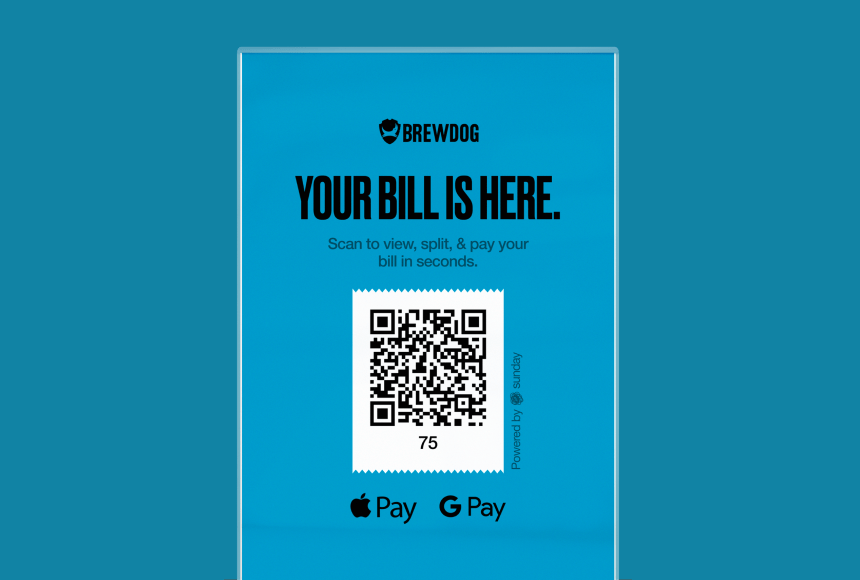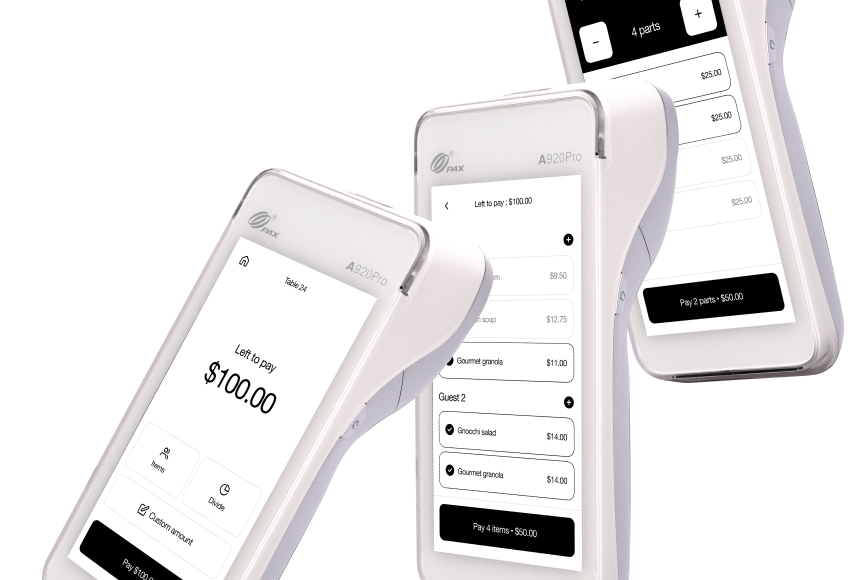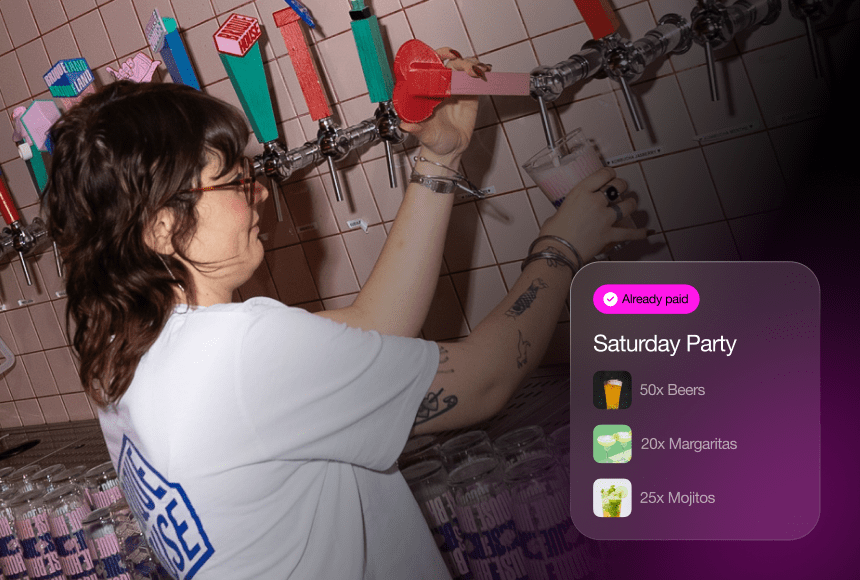
Elevating Your Rush-Hour Operations with a Simple Payment Upgrade
Why Focus on Peak Hours?
In any restaurant, peak hours can feel like a test of agility and nerves. You know the scene: a full dining room, a line at the host stand, servers weaving through tables with trays in hand, and new guests scanning the floor for a seat. Meanwhile, the clock is ticking, and your staff is pushing hard to deliver top-notch service before another wave of orders hits.
But in all this hustle, one critical bottleneck often emerges: the payment process. The time it takes for guests to receive their checks, finalize tips, and settle up can add unnecessary strain to your floor team. Long lines, hurried staff, and impatient guests can generate stress for both employees and diners—especially when multiple tables ask for the check simultaneously. That’s exactly where tableside payment swoops in to save time and minimize chaos.
This article explores how allowing guests to pay directly at their table can speed up the entire dining cycle, letting you breeze through peak hours with more efficiency and less stress. We’ll also touch on best practices to ensure a smooth rollout for your restaurant and staff.
The Hidden Time Sink in Traditional Payments
It’s easy to overlook just how time-consuming the usual checkout procedure can be. Servers must:
- Print the check after verifying each item is correct.
- Deliver that check to the table and wait for guests to review it.
- Take the credit card or cash back to the POS station to process the payment.
- Return to the table for the signature or to hand back change.
This back-and-forth may not seem like much for a single table, but multiply it across dozens of diners during a lunch or dinner rush, and the minutes quickly add up. Meanwhile, guests who are ready to leave end up waiting impatiently, possibly blocking new customers who could fill that table. It’s a domino effect where each small delay compounds into bigger slowdowns for the entire restaurant.
Cutting Down on Congestion: Tableside Payment in Action
Now picture a different scenario. The dining room is just as busy, but when a table finishes their meal, they use a quick QR code scan to pull up their check on their smartphone. They add a tip, confirm payment with a tap, and instantly get a digital receipt. The server’s role in this final step is reduced to a friendly “Have a great evening!”
In practical terms, here’s how this shift benefits your operations during peak hours:
- Reduced Server Trips: Each staff member can skip multiple journeys to and from the POS station, freeing them up to handle fresh orders or seat new arrivals.
- No Waiting for Credit Card Readers: You don’t need as many handheld card terminals because guests use their own devices to complete the payment.
- Instant Receipt of Funds and Data: Depending on the system, payments sync almost immediately with your POS. The front-of-house manager has real-time insight into which tables are cleared and ready for the next guests.
These improvements streamline your entire rush-hour sequence. Your team can better prioritize what truly matters: seating new guests, ensuring orders are accurate, and delivering that special touch that makes diners remember your establishment.
Faster Turnover, Bigger Smiles
When it comes to peak hour management, your business relies on quick table turnover. That’s partly why fast-casual spots thrive on constant motion. But even in a full-service environment, an extra five to ten minutes spent waiting for the server to bring a check can drag out the table’s occupancy. Multiply that across a busy shift, and you might lose the chance to seat an additional wave of customers.
- Accelerated Checkout: With tableside payment, the moment diners decide they’re done, they can settle up in seconds. This immediate ability to pay not only reduces bottlenecks but also keeps the energy of your dining room flowing.
- Lower Queue at the Door: Because guests leave sooner, your waitlist sees faster movement. Newcomers notice the quick turnaround, making them more likely to wait for a table and less likely to bail.
- Less Frustration for Staff: Your servers don’t have to juggle multiple checks at once, decreasing the risk of mistakes or misunderstandings during the busiest times.
An analysis by Restaurant Insider (3 Ways to Increase Table Turnover) noted that even a small reduction in checkout time can let a restaurant seat one more table per server, per shift. That difference can be huge for daily revenue, especially during rushes.
Less Stress Means Better Service (and Bigger Tips)
Peak hours aren’t just tough on your seating logistics—they take a toll on your staff’s mood and energy. Exhausted or flustered servers might inadvertently slip up on an order, forget to refill drinks, or neglect to mention an up-sell special. Those missteps could cost you in lost revenue and lower guest satisfaction.
Tableside payment helps by removing a common pressure point: the dreaded “Where’s the check?” conundrum. When your team doesn’t have to handle so many final payments manually, they can:
- Focus on Upselling and Service: Freed from the chore of collecting credit cards, servers have a moment to chat about that new dessert or seasonal appetizer, potentially increasing each table’s spend.
- Resolve Issues Promptly: If there’s a mix-up, staff can notice it sooner rather than being stuck in a payment queue at the POS. They can also keep better tabs on new tables arriving.
- Maintain a Positive Attitude: Busy shifts can be fun if staff feel they have the right tools. By removing a manual bottleneck, you lift morale and encourage a friendlier, more attentive attitude. That often leads to better tips, reinforcing the cycle of positivity.
According to a Toast Restaurant Technology Report (Restaurant Technology Report), digital payment solutions can increase average tip percentages by providing clearer tip prompts and a sense of convenience for guests. Higher tips keep your team motivated, which in turn enhances the atmosphere for diners.
Tackling the Tech Fears: A Quick Path to Adoption
One concern owners often have is: “Will my customers actually like this?” The short answer is yes, if you roll it out thoughtfully. Most diners already use smartphones for everything from ordering rides to shopping, so scanning a QR code to pay is second nature.
Here’s how to ease any potential tech anxieties:
- Use Clear Signage: A small card on the table that says, “Ready to pay? Scan here!” can instantly guide people. Keep instructions short and simple.
- Offer a Brief Demo: Train your servers to quickly show hesitant diners how easy it is to pay using their phone’s camera. A 30-second explanation usually does the trick.
- Stay Flexible: If someone prefers to pay the old-fashioned way, you can keep that option available, at least during the transition. Eventually, most guests will see how fast and painless the QR-based approach is.
With a friendly introduction, guests of all demographics can adapt quickly. After a few visits, they might even prefer scanning a code rather than fishing out cards or cash.
Quick Error Resolution and Real-Time Feedback
Sometimes during a rush, mistakes happen—a dish was added twice, or a drink was forgotten. Traditional billing means the server has to correct the check in the POS, reprint, and manually verify everything. But if you use a tableside payment system, the process often simplifies:
- Real-Time Bill Viewing: Customers see their itemized list of charges before finalizing payment, giving them a chance to spot errors right away.
- Immediate Adjustments: A server can fix or remove an incorrect item on the spot, usually with minimal fuss. The updated total appears instantly.
- In-App Feedback: Some solutions prompt a quick rating or comment from diners. If there was a small hiccup, they can mention it in the app, and you can address it quickly—potentially converting a grumble into a positive resolution.
These features reduce confusion and keep lines of communication open, even amid peak hour frenzy. You end up with fewer negative surprises and more satisfied customers walking out the door.
Integrating with Your Existing Workflow
Another question many owners ask is, “Will I have to replace my POS?” The good news is, not necessarily. Many tableside payment solutions, including sunday, can integrate smoothly with your existing system or operate in tandem with minimal disruption.
- QR Codes vs. Physical Devices: If you go with QR codes, you don’t even need specialized hardware. A few well-placed codes on table tents or check presenters can do the job.
- Flexible Data Flow: Some solutions offer APIs or direct integrations to ensure that once a table pays, your POS records the sale automatically. That eliminates extra manual steps in your daily close-out.
- Minimal Training Required: If staff can operate a smartphone, they’re already equipped to guide guests through the process. It’s a far cry from introducing a brand-new ordering system or complicated hardware.
The trick is to pick a solution that matches your restaurant’s size and style. Don’t overcomplicate if you run a small bistro, and don’t undershoot if you’re a high-volume establishment. Finding that sweet spot helps you achieve frictionless adoption.
Real Stories: The Power of Speedy Payment in Action
Picture a popular brunch spot that’s always slammed on weekends. Lines form out the door, and the manager’s biggest headache is turning tables quickly enough to keep wait times under control. After adopting tableside payment via QR codes, the manager notices:
- 5–10 Minutes Saved per Table: No more waiting for checks to be printed, delivered, and picked up. The diner decides when to pay, does it on their phone, and is free to go.
- Higher Gratuities: Guests see a prompt for 18%, 20%, or 25%. Many choose a standard or slightly higher tip rate, boosting server earnings. Staff morale increases as a result.
- Reduced Stress for Hosts: Because tables vacate more efficiently, the host can seat new customers earlier. The waitlist moves steadily, and fewer people abandon their place in line out of frustration.
In a matter of weeks, the brunch spot experiences less chaos, more satisfied guests, and rising revenue from additional seatings. That’s the real-world effect of a well-executed tableside payment approach.
Tips for a Seamless Rollout
Ready to give it a try? Consider these final suggestions:
- Start Small: Launch tableside payment for a portion of your dining room or during a quieter shift. Work out any kinks before going full scale.
- Communicate Clearly: Let customers know about the new option. A short line on menus or table cards—“Pay at your table via QR code”—helps reduce confusion.
- Train and Empower Staff: Host a quick training session so servers and hosts understand the solution and can troubleshoot minor issues. If they’re confident, guests will be too.
- Encourage Feedback: Ask your servers to gather guest impressions or read real-time comments if your system offers in-app feedback. Adjust as needed.
- Stay Open to Tweaks: If you notice a snag—for example, some tables prefer a printed check anyway—keep that option on the side. Over time, you’ll refine your approach to suit your unique crowd.
Adapting is key. Each restaurant has its own rhythm, so a short adjustment period is natural. Remain flexible, and soon you’ll find your staff breezing through rush-hour shifts more confidently than ever.
Your Next Step to a More Efficient Service
Every day, more restaurant owners discover that tableside payment can revolutionize how they handle peak periods. By letting technology tackle the final piece of the dining puzzle—payment—your team can devote their energy to what truly matters: welcoming guests, serving great food, and creating memorable experiences.
Yes, implementing a new process takes forethought. But from the moment you see guests scanning a code and paying in seconds—while your servers are free to attend to new arrivals—you’ll realize it’s worth the initial planning. This single shift can reduce lines at the door, boost staff morale, and provide a smooth close to each guest’s meal.
So, if your host stand is always swamped at 7 p.m. sharp, or your weekend brunch is known for the longest queue in town, consider a tableside payment solution. By upgrading the way you handle checks, you’ll transform the entire flow of your restaurant during its most intense hours. And that’s not just good for your bottom line—it’s a win for your staff and your guests, too.
Find out more today
Drop us your details below and we’ll reach out within the next 24h



